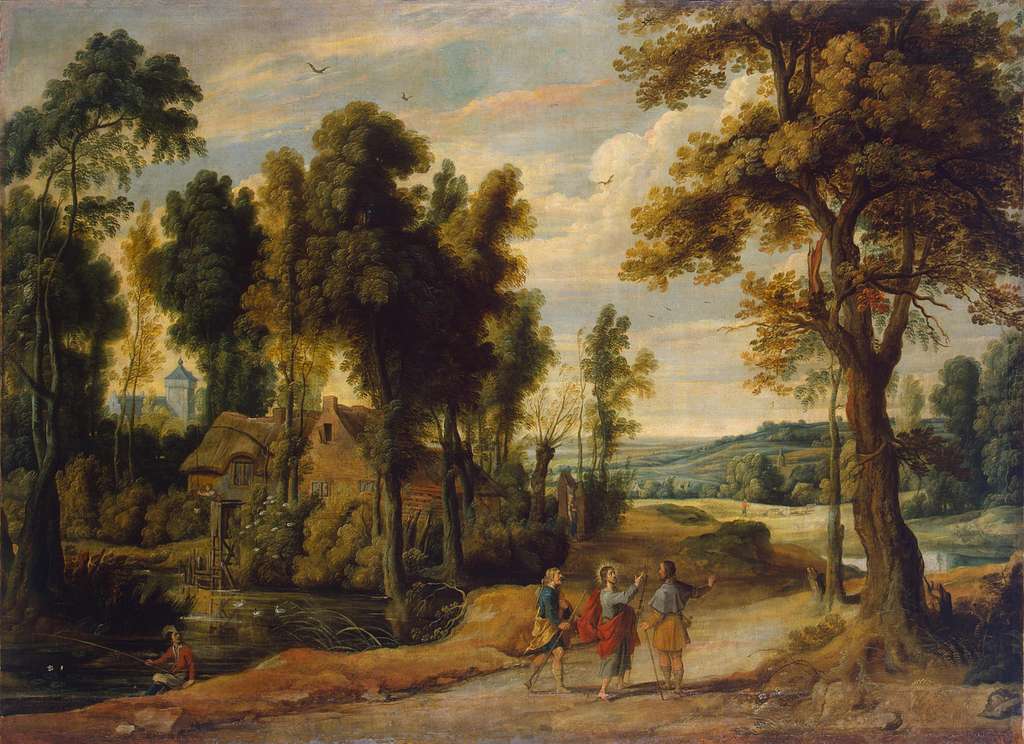
Everyone has some memory of asking for chocolate as a child, then being instructed by their parents to first eat lunch.
It is easy for the child to then question, “Why am I being denied what I like?”
But the greater question remains: why wouldn’t someone want what is best for them?
Something similar happens in St Luke’s account of the journey to Emmaus, which we reflect on this Sunday in the Maronite Lectionary.
When Jesus encounters Cleopas and his companion on their journey, saddened by the events of his death and burial, he chooses to keep them from recognising him (Lk 24:16).
This sounds strange: Christ sees their hopelessness, yet still chooses to not reveal himself to them. Could he not have simply settled their sorrow by making himself known?
We could also ask why a child isn’t always settled by chocolate. It is because the parent, in their greater wisdom, knows that lunch is healthier for a growing child than a tasty sugar-filled treat.
The parent can also trust that the child will one day look back and learn from this experience.
Christ in his wisdom also trusts us. He trusts that we will one day look back and reap the fruits from what were once seeds along the paths of our journeys.
Had Christ simply revealed himself to the two in this passage, their discussion about the scriptures would have neither yielded the same fruits nor caused the same internal burn (Lk 24:32).
They also would not have recognised him through the mystery of the Eucharist (Lk 24:31).
This brings us back to the greater question: why wouldn’t someone want what is perceivably better?
For what is more loving of God: spoon-feeding his creation answers, or inviting them to a divinely intimate relationship?
Any relationship starts with unknowns that fade as the relationship deepens. The mystery of love then begins to grow.
Christ, having established a relationship with us through the incarnation, entrusts us with the mystery of the Eucharist that this relationship may only grow.
It would take far less faith to profess Christ as Lord and God had he remained with us in his glorified body than it takes before the mystery of the Eucharist in quiet contemplation.
It is this very fact that offers us a deeper love for Christ and so prepares us to more greatly partake in the eternal banquet of Heaven.
This journey on which Cleopas and his companion embark is a journey of love, for it is an image of the plan of salvation: the greatest story of love. Think of it: the two are drifting towards their own ways out of hopelessness, then Jesus Christ, “the way,” humbles himself and joins them along “their way.”
Christ similarly joins humanity’s misdirected journey through the Incarnation.
Cleopas and his companion are still—up until then—unaware of his divine presence, just as many had been, before Christ died and rose from the dead.
However, at the breaking of the bread, that is, the sacrifice at Calvary, they finally come to encounter and recognise him as Lord and God, as did creation.
For his death, commemorated in the Eucharist, is not simply a death, but a triumph over it.
The Maronite Anaphora of Dionysius similarly describes Christ’s death as being “filled with the hope of resurrection.”
The journey can then also be compared with the Mass, in which we similarly walk a healing journey and come to encounter the same Risen Lord.
In the Maronite Liturgy, the priest first announces to us the “proclamation of life and salvation for our souls” just as Jesus did to Cleopas and his companion before the breaking of the bread.
When the priest ascends the altar, He similarly invites us to encounter the Risen Lord through the Eucharist.
For at the fraction rite, the priest fractures the host as a symbol for Christ’s death, and sprinkles Christ’s blood upon the broken body as an act of reunification.
He then elevates a single, resurrected host. At this point, our eyes are opened and we meet the Risen Lord.
After the mysteries are consumed by the faithful and the priest, all are left before an empty altar on which rest two lit candles placed at either end.
As this altar is situated beneath an empty apse, this scenery should remind us of the “two angels in white, sitting where the body of Jesus had lain, one at the head and one at the feet” (Jn 20:12) in the empty tomb.
Afterwards, we truly “go in peace” for Christ has indeed conquered death!
